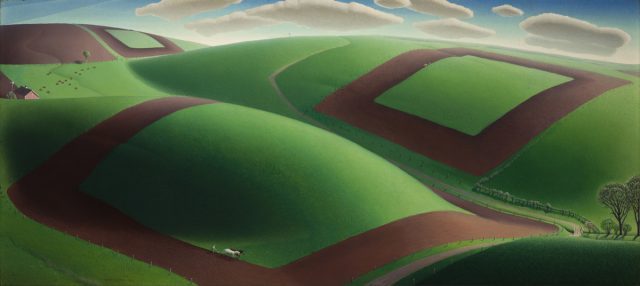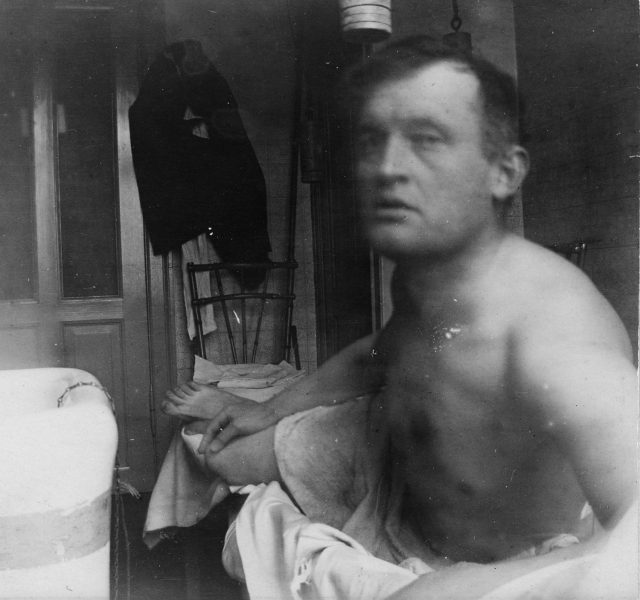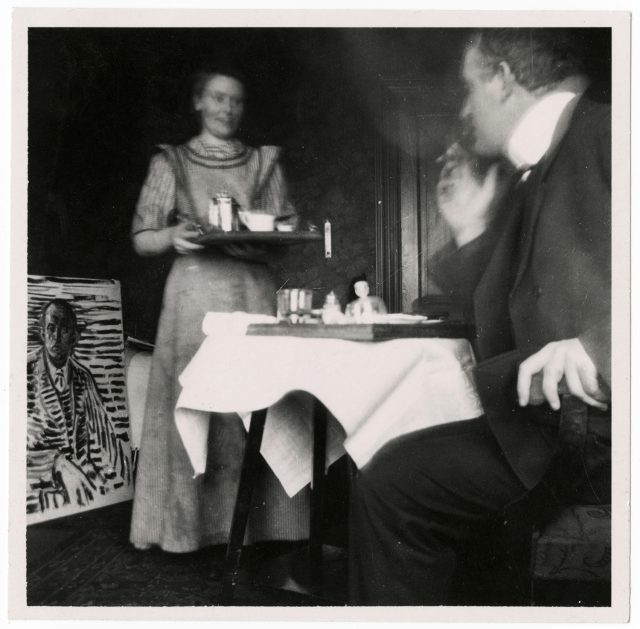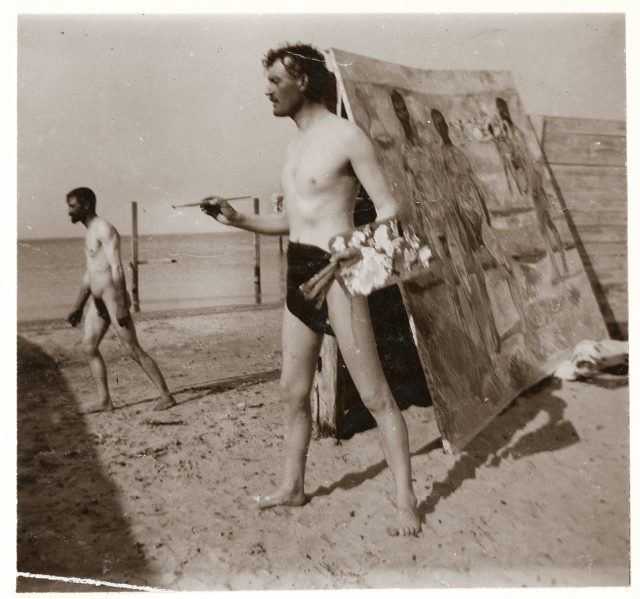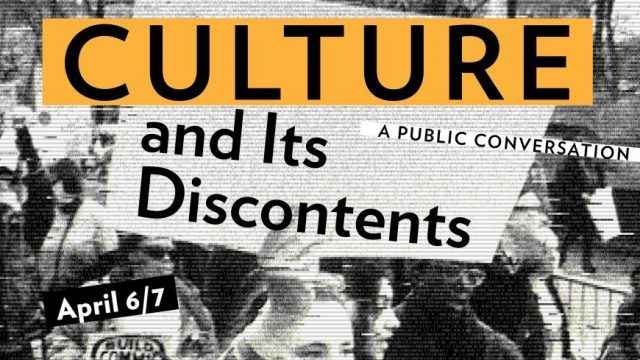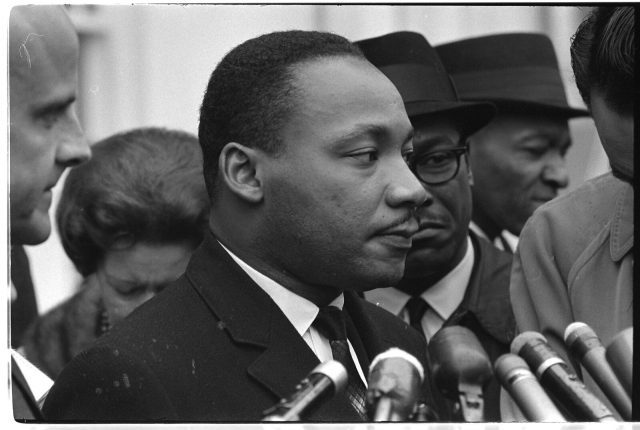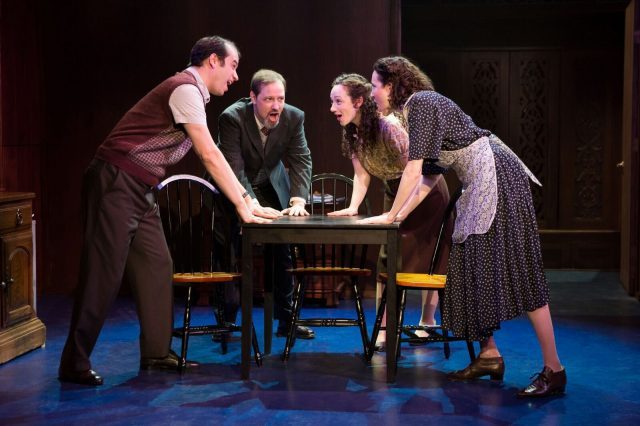
The Goldsteins finally agree on something in world premiere musical at the Actors Temple (photo by Jeremy Daniel)
Actors Temple Theatre
339 West 47th St. between Eighth & Ninth Aves.
Saturday – Thursday through July 29, $79 – $99
goldsteinmusical.com
actorstempletheatre.com
A man gets a whole lot more than he bargained for when he writes a family history in Goldstein, a new musical that opened last night at the Actors Temple Theatre. The frame story of the show, which features a book by Charlie Schulman and music and lyrics by Michael Roberts, is that Louis Goldstein (Zal Owen) is a writer, recent winner of a Pulitzer Prize for his tale, and he’s at the Actors Temple as part of an authors series. “We inherit so many things from our families: the color of our eyes, our senses of humor, even our high cholesterol,” he tells the audience. “But we also inherit our stories. That’s what binds families together. The stories we tell ourselves about ourselves. My parents and grandparents are no longer with us, but I know in my heart they would have been proud of me for having written this book. Even now I feel their presence like they’ve never left.” Indeed, they are all still there; white sheets are removed from the old furniture on Alexander Woodward’s homey set, bringing back the Goldsteins’ past—and the Goldsteins themsevles, as Louis’s dead relatives appear and relive scenes and argue that he has done them all a disservice with his book. “You distort and deceive, you torture and twist / and, while a fact may be true, its truth may be missed,” his grandfather Louie (Jim Stanek) sings. Louie’s wife, Zelda (Amie Bermowitz), adds, “You write with an axe / but, fine, take all your lies.” Louis handles it all rather well as he shares such stories as his grandmother falling in love with a man (Owen, who plays several parts) on the ship bringing her from Eastern Europe to America; his aunt Sherri’s (Megan McGinnis) desire to go to medical school; his uncle Nathan’s (Aaron Galligan-Stierle) time in the military and marriage to Eleanor (Sarah Beth Pfeifer); and his sister, Miriam (Julie Benko), who is perhaps the most practical of the clan. Not all the stories paint the Goldsteins in a positive light, but Louis sees it all as what made the family what it is, including several long-held secrets that finally come out.
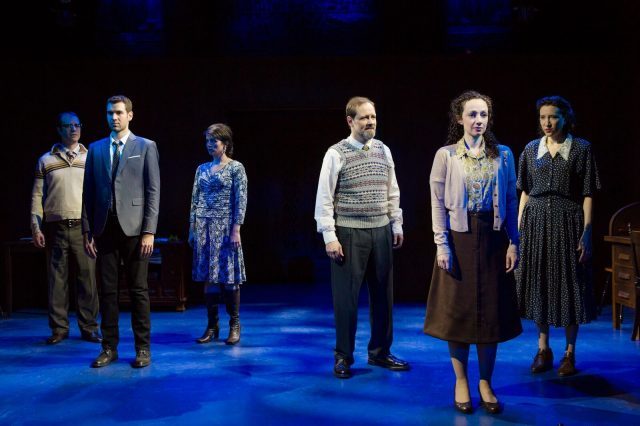
Goldstein follows the ups and downs of an immigrant clan on the Lower East Side (photo by Jeremy Daniel)
Goldstein is a quaint, bittersweet musical that moves seamlessly from humor to tragedy. The songs, which include “They Are Here,” “Up Ahead,” “Honest as the Day Is Long,” and “Tell Me All,” are accompanied by an unseen pianist and flutist and tend toward the conversational; there are no big, show-stopping numbers but instead light tunes that don’t get in the way of the plot. Roberts and Schulman, who previously collaborated on New York Fringe winner The Fartiste, and director Brad Rouse keep it relatively simple and straightforward. (The show is inspired by Schulman’s 2000 play The Kitchen, about eighty years in the life of one family; an early reading featured Danny Burstein, Marilyn Sokol, Rachel Botchan, and Larry Block.) Among the nice touches is the use of the center aisle as a pathway for death and birth. Owen (Fiddler on the Roof) is eminently likable as the narrator, a man facing his own personal issues, while McGinnis (Daddy Long Legs, Les Misérables) proves once again that she has a magical voice. The show fits in very well at the Actors Temple, a working shul that boasts photos and bios of such former members and worshippers as Jerry Lewis, Milton Berle, Sandy Koufax, the Three Stooges, Shelly Winters, Hank Greenberg, and Henny Youngman. While Goldstein might deal with a Jewish family, it is really about many of the immigrants who made their way to the Lower East Side in the late nineteenth and early twentieth centuries as they sought to balance assimilation with tradition, trying to establish their identity while building a family.
